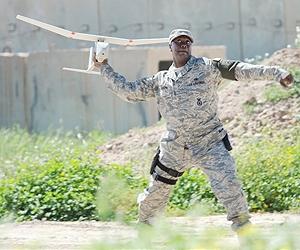With the release the critically acclaimed movie “Oppenheimer”, I am once again inclined to think about Strategic Deterrence in the modern day.
In 1942, during World War 2, J. Robert Oppenheimer was appointed to lead the Manhattan Project, with the ultimate goal of developing an Atomic Bomb. The development of that Atomic Bomb had nothing to do with deterrence; it had to do with winning the war. The intent from the start of the Project was to design, build, and most importantly, detonate a weapon which would surprise the adversary and be so powerful and devastating that they would have no choice but to surrender; that is exactly what happened. The atomic bomb was dropped on Hiroshima and Nagasaki in August of 1945, and the Japanese surrendered, ending World War 2, only one month later.
The Atomic Bomb that ended the World War 2 in 1945 was built to be detonated. Nuclear weapons that have been built since World War 2 were not built to be detonated; they were built in hope that they would be used to ensure they would never need to be detonated in anger. While the Oppenheimer Bomb was built in total secrecy so that the adversary would never know of their pending fate, Cold War and post-cold war Nuclear Weapons are flaunted and tested in the open so that the adversary knows precisely their potential fate. All countries that build nuclear weapons know that they can never be detonated in anger; they are too powerful and devastating, and too politically charged. Nonetheless, countries continue to build, stockpile, and openly test nuclear weapons; they continue to use nuclear weapons without planning to detonate them in anger. The “use” for these weapons is strategic deterrence. Cold War era warfighters began developing systematic models of how to operationalize the art of influencing someone to NOT take a grievously severe action such as using nuclear weapons against another country. These models relied on mutually assured destruction. Nuclear powers know today that if they unleash their nuclear weapons on another nuclear power, the response will be a nuclear one, and no country can tolerate that. This is the essence of strategic deterrence.
Nuclear weapons that have been built since World War 2 were not built to be detonated; they were built so that they would never need to be detonated in anger. This is the essence of strategic deterrence.
If you’d like to learn more about this subject, consider taking the upcoming new ATI course, Nuclear Weapons and Strategic Deterrence. Over two days the course will cover the physics, technology and operations of strategic nuclear weapons. To learn more about this course, and to register, please go here.
